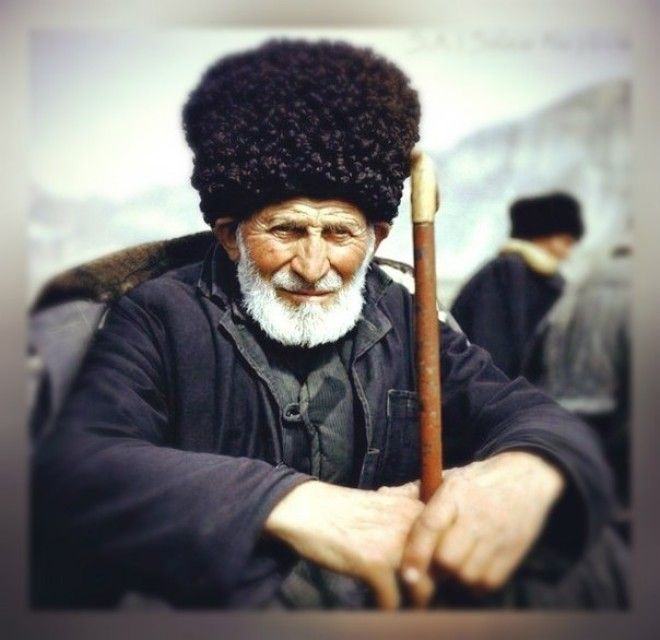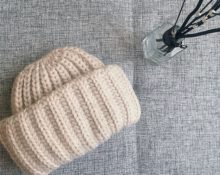 The peoples of the Caucasus have a saying: “If you have no one to consult with, consult with your papakha.” Why the headdress is given such great importance, and what it means in the life of a mountain man, we will tell you in this article.
The peoples of the Caucasus have a saying: “If you have no one to consult with, consult with your papakha.” Why the headdress is given such great importance, and what it means in the life of a mountain man, we will tell you in this article.
Men's Caucasian sheepskin hat
The speech will go about the hat.
Reference! The word comes from Turkic dialects, “papakh” (the correct version of the name) means “hat”. Sometimes it is called Trukhmenka.
From an article in the Great Soviet Encyclopedia you can glean information about the history of this original headdress:
- For a long time, the hats of the Caucasian peoples were made of fabric, felt, and fur;
- in the 18th century, not only men wore a hat; it was also in women’s wardrobes;
- from the beginning of the 19th century, military personnel based in the North Caucasus introduced it into their uniforms;
- from the middle of the 19th century, a high fur hat officially became a winter headdress in the Cossack troops;
- before the Great Patriotic War, the privilege of wearing an astrakhan hat was given to the highest officers of the Red Army, starting with major general and above;
- during the war, colonels of all branches of the military were added to this list.
Georgian sheepskin hat

A Caucasian man who respected himself always wore a headdress. Most often it was a hat. The man in her always looked proud and noble.
Important! This hat is universal: it is not hot in summer and not cold in winter. It is cut in such a way that it actually forces you to keep your back straight.
The raw material for production is the wool of a ram, sheep or goat. Special specimens were made from lamb skin.
Trukhmenki are divided into the following types:
- Astrakhan ones are the highest quality and most expensive. They are sewn from astrakhan fur, the fur of unborn lambs, and astrakhan fur, the fur of newborn lambs. This is the most desired gift for any Caucasian. It denotes status and respect from others.
- Shepherds are a common Caucasian headdress, sometimes called a “folk hat”. It is sewn from shaggy sheepskin, its curls can go down to the forehead and hide the eyes. Comfortable for grazing (not cold or hot) and, if necessary, can serve as a pillow.
- Cossack - the bottom has a fabric base, red or blue, with a white cross symbolizing Orthodoxy. In preparation for battle, the warriors put a steel plate in the bottom pocket - a cuff, which protected them from a saber strike. Popular among the Kuban and Terek Cossacks.

Purpose
A headdress has always been a special pride for a man. There may be more than one trukhmenka in the wardrobe of Caucasians. Fur hats were kept carefully wrapped in clean cloth and passed on from generation to generation. Usually each event had its own:
- on every day - dark or brown;
- for weddings and holidays - white;

- for a funeral ceremony - black.
Several interesting facts about the traditions of the Caucasian peoples associated with the papakha.
- Leaving the house without a headdress was considered unacceptable, and appearing at a wedding with your head uncovered was the utmost disrespect for the newlyweds and all those present.
- Young men often proposed to girls in an original way: they threw their hats out the open window. If the hat was returned, it meant refusal.
- The headdress should not leave the head while it was intact. There are folk sayings and proverbs about this.
- Trukhmenka was not removed even by a petitioner, except in cases of a request to stop blood feud or war.
- Threw in the heat of an argument, it meant the final argument - the owner was confident that he was right.
Important! They say that the hat serves as a safe. There is no need to check - a knocked-down headdress is considered an insult among Caucasians.
Papakha in modern times
Now we are looking for answers to all questions on the Internet. Try typing “papakha” into Google - you will see many offers for the sale of this headdress. Several online stores are filled with it, offering fur hats in black, white, brown, and gray colors. As you know, demand creates supply. Since there is such a generous offer, it means nowadays, hats are also popular.
Who buys such hats and for whom do Caucasian craftsmen sew headdresses, each of which is exclusive?
- First of all, these are actors of national song and dance groups.
- Men from mountain villages, who still maintain the traditions of their ancestors, also buy and wear hats.
- Generals and colonels of the Russian army continue to wear hats made of different types of astrakhan fur.
Some famous Caucasians are also popularizing the national headdress.
- Makhmud Esambaev, dancer, soloist of the Bolshoi Theater, People's Artist of the USSR, did not take off his astrakhan coat until the end of his days, even wearing it at meetings of the Supreme Council. An exception was made only for theatrical productions.
- Khabib Nurmagomedov, a Russian wrestler who is the current UFC champion, has been shown wearing a papakha at public events for many years in a row. He even gets into the ring wearing a national headdress, ignoring requests from sports corporations to advertise their products. Khabib proudly replies that before the fight he will wear the hat of his ancestors. After one of his high-profile victories in October 2016, demand for them increased 16 times.

Fashionable women's hats made of arctic fox, silver fox or other fur with a high crown and a flat round bottom are called kubanks, which is a variant of the trukhmenka and is tailored in its likeness. Kubanka also appears from time to time in men's wardrobes. One of the fashion trends is the light astrakhan hat. Knitters imitate the style with dense textured knitting.
Men and women look very interesting and modern in hats. This hat is for all times - giving height and forming a proud posture, it will always remain in fashion.




 0
0





